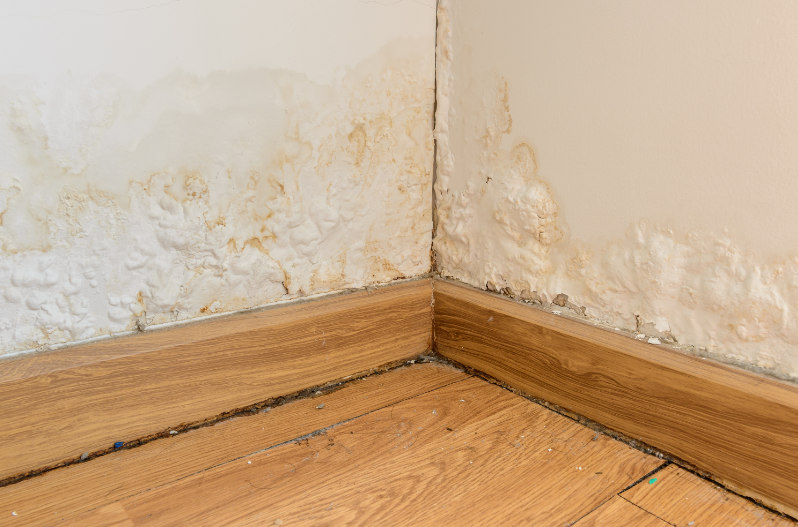You might not think baseboard water damage is a big deal, but the water can actually soak into the wall. The walls will then crack and crumble as well as push out the baseboards. The only way to fix the problem is to replace that section of the wall and the baseboards. If you have a wet floor, use the following steps to repair water damage on baseboards.
What Causes Baseboard Water Damage?
Technically, any source of water will cause water damage to your baseboards. However, groundwater flooding, dishwasher floods, and plumbing leaks are the primary causes. Regardless of the water source, you need to clean it up right away. The longer you wait, the more damage the water can do.
Why Is Water Damage to Baseboards a Problem?
It’s easy to overlook the risk of baseboard water damage. If you do not clean it up quickly, the water will seep into the wall. It will then either cause the wall to crumble or lead to mold.
Unless you make repairs, water-damaged baseboards can lead to:
- Mold Growth
- Crumbling or Cracked Walls
- Warped Walls and Baseboards
- Yellow Water Stains
- Musty Odors
How To Fix Baseboards With Water Damage
Loosen the Wet Baseboard
Run a utility knife along the top of the baseboard to separate it from the wall. Then gently loosen the wet baseboard from the wall with a wide-bladed putty knife. You want to separate the baseboard from the wall and expose the nails.
Carefully Pry It off the Wall
Then gentle pry the baseboard off the wall with a pry bar. Put the pry bar near the nails and work slowly to avoid warping or cracking the baseboard. Start closest to the water damage, then move outward. Move the baseboard a little bit around each nail until it comes free.
Dry the Walls and Baseboard
Once you remove the baseboard, use a high-velocity fan and a dehumidifier to dry the wall. Wipe the baseboard down with a dry rag, then put it near the fan to dry. If the baseboard is already cracked or warped, throw it away.
Disinfect the Area
Once everything is dry, disinfect the wall and baseboard with bleach. Mix one cup of bleach in a gallon of warm water. You can wipe down the baseboard with a rag, but a spray bottle makes cleaning the water fast. Let both air dry.
Prep the Walls
Run your hand along the wall to feel for bumps, then tap it with your fingers to see if it crumbles. You can smooth out minor bumps with joint compound, but you should replace crumbling wall boards. If the wall is okay, scrape away any old caulk or paint build-up where the baseboards go.
Prep the Baseboards
Lay the baseboard flat on the floor to see if it’s warped. If the board is straight, gently sand off old caulk and paint build-up on the edges and corners. If it’s warped or rotting, replace it. Either way, paint the board so it matches the rest of the room.
Reinstall Your Baseboards
Finally, reinstall the baseboard. Put a few dabs of caulk on the back to help hold it in place, then attach it to the wall with finishing nails. Seal it to the wall and the floor with silicone caulk to block out water.
Do You Need To Replace Water-Damaged Baseboards?
While you may not need to replace water-damaged baseboards, you do need to make repairs. Baseboards serve as more than decoration. They seal the joint between the floor and the wall and block out water, dirt, insects, and rodents.
Did water damage more than your baseboards? If water soaked into your walls or flooring, our experts can repair the damage fast. Call 888-443-3110 now for a no-risk free quote on water damage repair.





